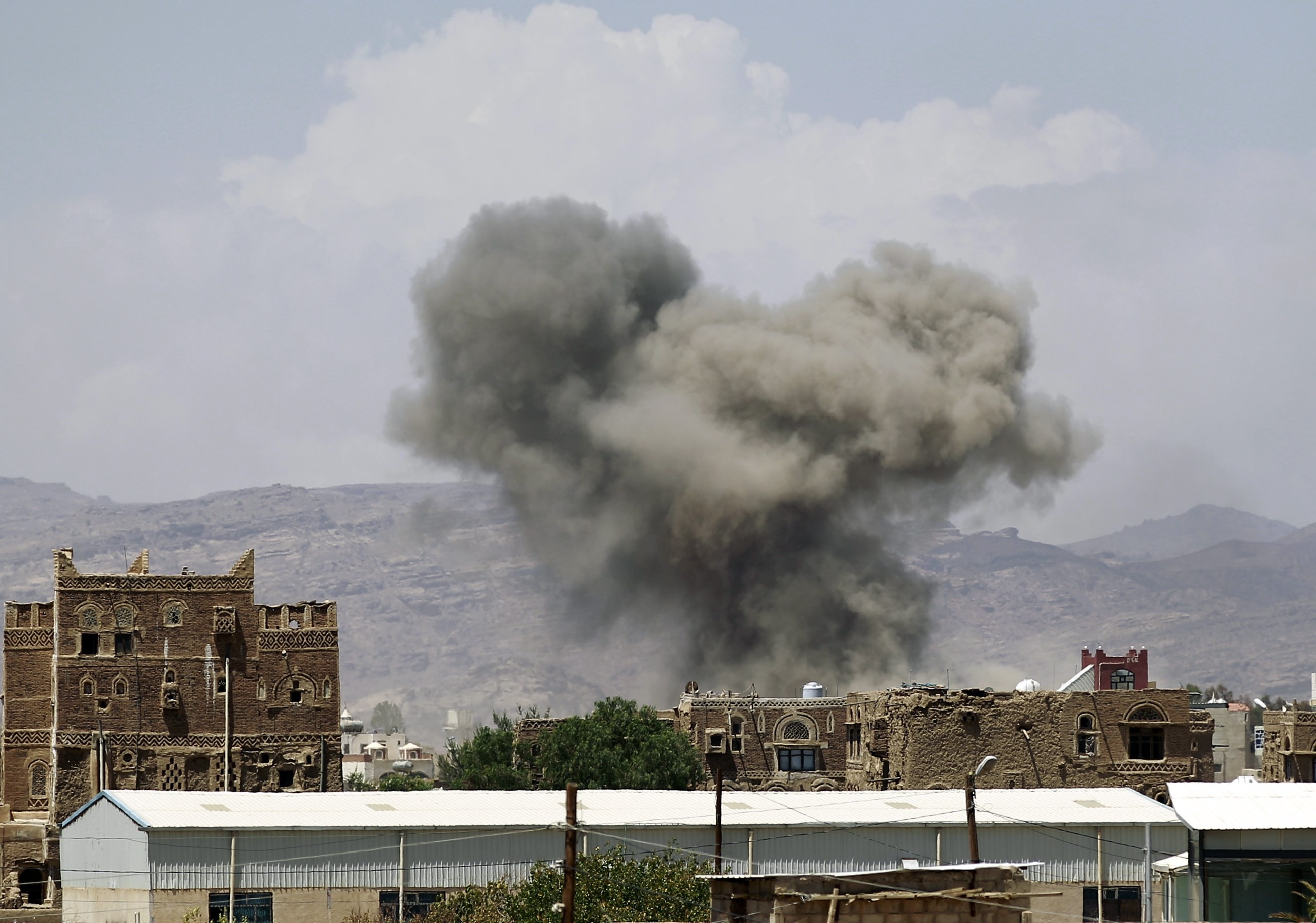
Of ceasefire, its breach, weakening infrastructure… certainly the current situation in Yemen is not sustainable

On May 15, Yemen’s warring factions agreed to prisoner exchange. This came on the heels of a shaky ceasefire agreed in April 2016, only to be honoured in breach.
Ever since Saudi Arabia and its allies began strikes in Yemen in March 2015 to dislodge the Houthis from capital Sana’a and to restore Saudi-backed President Mansur Hadi to power, about 6,500 people have died, thousands wounded and another 2.8 million displaced, according to the UN figures. Yet, the outside world is indifferent to the scale of humanitarian crisis building up and a civil war raging on in Yemen.
Saudi Arabia’s incessant bombing of Yemen is being criticised for its wanton character. This coincides with the growing criticism on the war in Yemen, and the role of Britain, France and the US in supplying military hardware to Yemen. In the UK media, articles on the use of British supplied military hardware by the Saudi Arabia coalition in Yemen are regularly appearing. This has led to calls for full-scale investigation into the role of the British military hardware and advisors.
The US faces similar criticism at home; however, tentative and patchy efforts at establishing peace are under way. The UN special envoy Ismail Ould Cheikh Ahmed is engaged in intensive diplomacy to enforce a ceasefire prior to peace talks. The diplomacy is focused on immediate cessation of hostilities and handover of the weapons.
The last two rounds of negotiations, in June 2015 and December 2015 in Genève, have not yielded any breakthrough. Since March 2016, though hope had emerged for a new round of talks in Kuwait. The ceasefire was to come into effect on April 10; yet it has not happened.
However, focus on ceasefire and talks has produced some sort of tentative agreement on prisoner exchange between the warring parties in May. At the same time, peace talks are being kept alive. One sticking point in peace talks is the Houthis’ demand that a transitional government should be established before agreeing on the composition and shape of the future government.
On the other hand, Saudi Arabia insists that Mansur Hadi is the legitimate president.
Read also: The tangled web of Yemeni politics
These two widely divergent positions are hard to reconcile. Mansur Hadi assumed power after the ouster of long-ruling Abdel Saleh in the wake of the Arab spring. The power was transferred under the Gulf Cooperation Council-brokered agreement. In January 2015, when the Houthis entered the capital Saran, Mansur Hadi went into exile after his base power in Aden fell to Houthis. In October 2016, Hadi returned to Aden after Saudi coalition landed troops to recapture Aden.
However, the status quo is unsustainable. When Saudi Arabia began strikes in Yemen, there was little support for this action even among the Muslim countries. Pakistan wisely stayed out of the conflict by not committing its troops. Saudi Arabia mobilised military support from Sudan and Egypt. Since then, it has not been smooth sailing for the Saudi coalition.
One year down the road, Saudi Arabia has not achieved its stated objectives. The government troops, with the help of the Saudi coalition, might have recaptured Aden, yet a vast area remains under the Houthis control. Contrary to Saudi Arabia’s original intention of reducing Iranian influence, the Iranian government has publicly pledged to support the Houthis.
The deadlock is likely to persist with the Saudi coalition troops getting bogged down in an unwinnable war. The indiscriminate bombing has further weakened the rickety infrastructure, with malnutrition and hunger on the rise.
Beyond political motives, the bigger question is whether Saudi Arabia can afford the cost of this long war in Yemen. Saudi Arabia is facing the worst financial crisis of its history. With oils prices at their lowest, and the US dependence on Saudi oil on the wane, Saudi Arabia has begun to experience budget shortfall for the first time in its history. Last year’s budget deficit reached 100 billion dollars, an unthinkable occurrence given Saudi Arabia’s famed inexhaustible wealth. This has necessitated swinging cuts in generous Saudi welfare system which may lead to wider social unrest. Both Syrian and Yemeni military adventures are imposing extra cost on the Saudi resources when its budget is already in the red.
Read also: Region on fire
Given these circumstances, it is hard to see how Saudi Arabia will continue to fund these costly military adventures.
However, there seems a belated outbreak of good sense from the Saudis in recent months. Al-Monitor, a respected online website on the Middle East, has hinted at Saudis’ search for finding a way out of the Yemeni quagmire by engaging the service of Oman, a Gulf Cooperation Council member and neutral country in the conflict, to put out peace feelers. This is an eminently sensible move forward towards finding a political solution to the conflict. This Track-2 diplomacy is proceeding in parallel with the UN peace mission led by Ismail Ould. The hope is that these two initiatives, in between themselves, can lead to some provisional understanding on the need for securing peace in Yemen.
There is also suggestion of the EU stepping in as peace mediators if the UN and Oman do not lead to any sustainable outcome.
Yemeni people have suffered enormously since March 2015. According to the humanitarian organisations working in the country, the humanitarian crisis in Yemen is growing worse with every passing day. The people of Yemen need peace to rebuild their shattered lives. And the sooner the warring parties realise this, the better for the people of Yemen who have been the unfortunate victims of foreign meddling in their domestic affairs for too long.